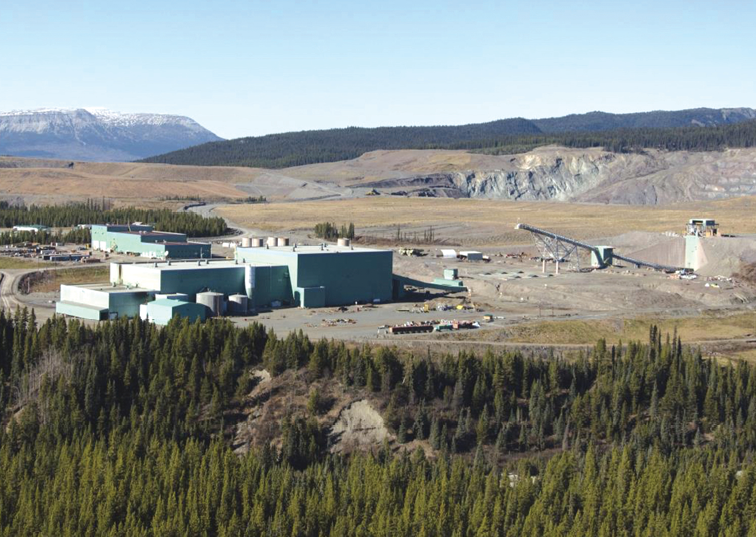AuRico Metals has reported the results of an updated feasibility study for the Kemess underground project at its 100% owned Kemess property in north-central British Columbia. The study contemplates development of a low-cost, panel-caving operation with a 12-year mine life.
The Kemess underground project is located 6.5 km north of AuRico’s previously mined Kemess South open-pit mining and processing operations and will benefit from the Kemess South infrastructure. Kemess South operations ended in March 2011, and the processing plant and other facilities and equipment are currently on care and maintenance. Existing on-site infrastructure includes offices, warehouse, laydowns, maintenance facilities, crushed ore stockpile and reclaim, access and service roads, airstrip, explosives magazines, and electrical substation. A company-owned, 380-km power line provides power to the mine site via the BC Hydro grid.
The Kemess underground feasibility study assumes total life-of-mine production of 1.4 million oz of gold, 573 million lb of copper, and 4.5 million oz of silver in concentrate. The underground project is 6.5 km north of the existing Kemess South pit and mill, shown here. (Photo: AuRico Metals)
The Kemess underground feasibility study assumes total life-of-mine production of 1.4 million ounces (oz) of gold, 573 million pounds (lb) of copper, and 4.5 million oz of silver in concentrate. Production during the first five years would average 129,000 oz/y of gold and 52 million lb/y of copper. Testwork indicates that the ore will produce a clean concentrate that will be readily marketable to both smelters and traders.
Co-product all-in sustaining costs of production during the first five years are estimated at $682/oz for gold and $1.36/lb for copper. Precommercial production capital costs, including 12.5% contingency, are estimated at C$450 million.
The majority of the capital expenditures pertain to underground development, reflecting the benefit of having existing infrastructure and processing facilities in place, but also the higher proportion of upfront development requirements for cave mining. The two most significant categories of mine capital expenditures are underground mine development and purchase of underground mobile equipment.
While the outright purchase of underground mining equipment is assumed by the feasibility study, AuRico is also evaluating leasing alternatives. Precommercial production expenditures on underground mobile equipment are estimated at C$86 million.
The Kemess processing plant is expected to produce a single concentrate from the underground ore, with an estimated 22% copper content as well as payable gold and silver. Testwork indicates metallurgical recoveries of 91% for copper, 72% for gold, and 65% for silver.
The 107.4-million-metric ton (mt) Kemess underground ore reserve is located approximately 200 to 550 m below surface. The lateral extents of the reserve are approximately 570 m east-west and 90 to 300 m north-south. According to the company, the planned production rate of 25,000 mt/d is considered to be well within the capacity of a cave footprint of these dimensions.










